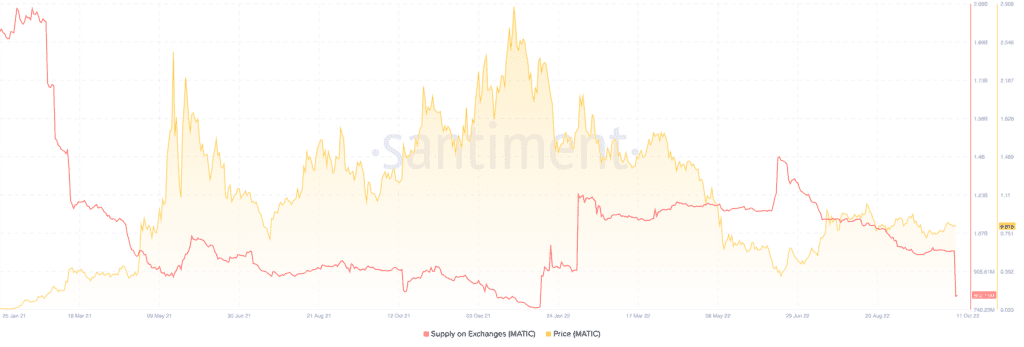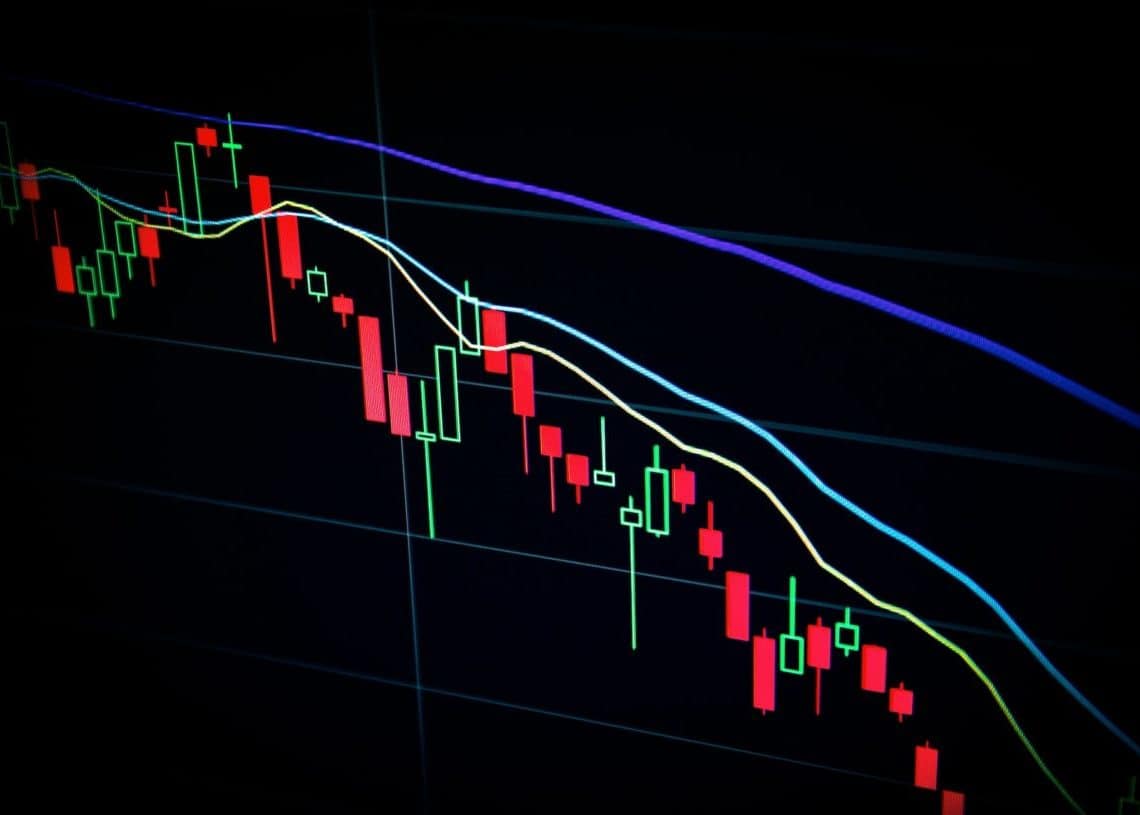Supply of MATIC on exchanges plummeted to a nine-month low on Oct 26, falling to over $800 million, data from an on-chain analytics platform Santiment showed.
Typically, a negative correlation between its price and supply on exchanges may be seen in the token’s chart above. As a result, historically, an increase in price has been accompanied by a period of declining MATIC reserves at exchanges, and vice versa.

It indicates two things the exchange balances have been steadily declining. First, the pressure to sell is lessened. If market players want to sell their tokens or create yield, they frequently transfer them to exchanges. In either case, there is no holding mentality and a closer path to exchanging their tokens for other cryptocurrencies or stablecoins.
Second, private wallets [to hold] or decentralized finance protocols are most likely being used if users are transferring their assets away from exchanges. The value of the token and the use case for the Polygon are found in the latter.
MATIC is used, like ETH, to settle fees on its blockchain network. Increased use of the token could result from a lower supply of exchanges. And indeed, this is what is taking place.
Reddit nonfungible token [NFT] avatar trading and sales are growing at the same time as the enormous MATIC outflow from exchanges. On the blockchain, these digital treasures are minted as NFTs.
BitPay Adds Polygon’s MATIC Support
Polygon has scored significant adoption by well-known fintech organizations which is indicative of a probable MATIC price rise.
According to an official release, BitPay, one of the biggest cryptocurrency payment providers in the world, will now accept MATIC, Polygon’s native coin.
Users will be able to buy, store, exchange, and utilize MATIC as well as a number of other ERC-20 tokens on the ecosystem, such as USDC, DAI, BUSD, and WBTC, using the BitPay app.
On the price front, the token has surged by over 7% over the past day and by 10% over the past two weeks, at the time of writing this post.

